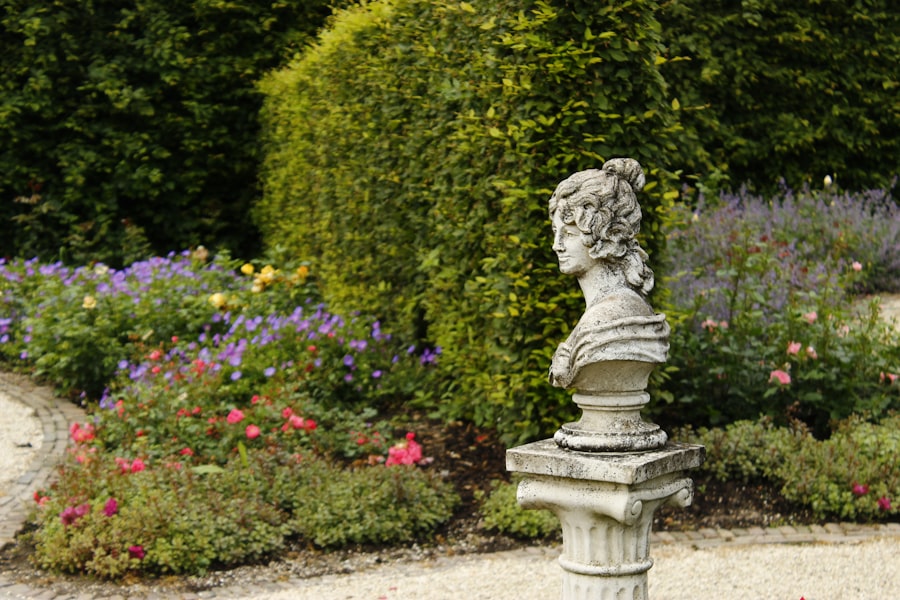
The Hanged Man Tarot card is rich in symbolism, representing a unique blend of sacrifice, transformation, and enlightenment.
This imagery is not merely for shock value; it serves as a powerful metaphor for the state of being in limbo, where one is forced to pause and reflect.
The position of the figure suggests a voluntary surrender to a situation, indicating that the individual has chosen to relinquish control in order to gain deeper insights. The act of hanging upside down can also symbolize a shift in perception, as the world appears entirely different when viewed from an inverted angle. The Hanged Man is often associated with the element of water, which signifies emotions and intuition.
This connection emphasizes the need for introspection and emotional clarity during times of uncertainty. The card’s association with the number twelve in the Major Arcana further enhances its significance, as twelve is often linked to cycles and completion. In many interpretations, the Hanged Man embodies the idea of letting go of old patterns and beliefs that no longer serve one’s higher purpose.
This card invites individuals to embrace a state of suspension, where they can reflect on their lives and consider new possibilities that may arise from a different perspective.
Key Takeaways
- The Hanged Man Tarot card symbolizes sacrifice, letting go, and gaining a new perspective.
- Surrender and acceptance are key themes in the Hanged Man Tarot card, encouraging us to release control and trust in the process.
- The Hanged Man Tarot card emphasizes the importance of shifting our perspective and seeing things from a different angle.
- The Hanged Man Tarot card can have different meanings and interpretations depending on its placement in various Tarot spreads.
- In a Tarot reading, the Hanged Man Tarot card encourages us to embrace change, let go of resistance, and find peace in surrendering to the unknown.
- Embracing the lessons of the Hanged Man Tarot card involves practicing patience, letting go of control, and finding stillness in the midst of uncertainty.
Surrender and Acceptance in the Hanged Man Tarot Card
Surrender and acceptance are central themes embodied by the Hanged Man Tarot card. In a world that often glorifies action and control, this card serves as a reminder that sometimes the most profound growth occurs when we allow ourselves to let go. The act of surrendering does not imply weakness; rather, it signifies a conscious choice to release the need for immediate results or solutions.
This can be particularly challenging in a society that values productivity and achievement. However, the Hanged Man encourages individuals to embrace stillness and trust in the process of life. Acceptance is another crucial aspect represented by this card.
When one finds themselves in a situation that feels stagnant or unyielding, the Hanged Man suggests that acceptance can lead to liberation. By acknowledging the current circumstances without resistance, individuals can open themselves up to new insights and opportunities for growth. This acceptance often requires a shift in mindset, moving from a place of frustration to one of understanding.
The Hanged Man teaches that by accepting what is, we create space for what could be, allowing for transformation to occur organically.
The Importance of Perspective in the Hanged Man Tarot Card

Perspective plays a pivotal role in the interpretation of the Hanged Man Tarot card. The very nature of the card—depicting a figure hanging upside down—serves as a visual cue that encourages us to reconsider our viewpoints. In many situations, we may find ourselves entrenched in our beliefs or ways of thinking, which can limit our ability to see alternative solutions or paths forward.
The Hanged Man invites us to step back and reassess our circumstances from a different angle, fostering creativity and innovation. This shift in perspective can lead to profound realizations about our lives and relationships. For instance, when faced with challenges at work or in personal relationships, taking a moment to view the situation from another person’s standpoint can yield valuable insights.
The Hanged Man encourages empathy and understanding, reminding us that our experiences are often intertwined with those of others. By embracing this broader perspective, we can cultivate deeper connections and navigate conflicts with greater ease.
The Hanged Man Tarot Card in Different Tarot Spreads
The placement of the Hanged Man Tarot card within various tarot spreads can significantly influence its interpretation. In a three-card spread, for example, if the Hanged Man appears in the past position, it may suggest that previous experiences of surrender or sacrifice have shaped the querent’s current situation. This could indicate that lessons learned from letting go are now informing their present choices.
Conversely, if the card appears in the future position, it may signal an upcoming period where the querent will need to embrace stillness and reflection before moving forward.
If it appears alongside cards representing conflict or struggle, it may highlight the necessity of pausing to reassess one’s approach before taking action.
Alternatively, if paired with cards symbolizing growth or enlightenment, it could indicate that embracing surrender will lead to significant personal development. The context provided by neighboring cards is essential for fully grasping the nuances of the Hanged Man’s message within any given spread.
The Hanged Man Tarot Card in a Tarot Reading
When drawn during a tarot reading, the Hanged Man can evoke a range of emotions and insights for the querent. Its presence often signals a time of introspection and contemplation, urging individuals to pause and reflect on their current circumstances. This card may appear when someone is feeling stuck or uncertain about their next steps, serving as a gentle nudge to embrace this period of limbo rather than resist it.
The Hanged Man encourages individuals to explore their feelings and thoughts deeply, allowing for clarity to emerge over time. Moreover, the Hanged Man can also indicate that there are lessons to be learned from surrendering control. It may suggest that by letting go of rigid expectations or preconceived notions about how things should unfold, individuals can open themselves up to new possibilities.
In this sense, the card serves as an invitation to trust in the timing of life and recognize that sometimes waiting is an essential part of growth. The insights gained during this period can ultimately lead to transformative experiences that align more closely with one’s true self.
How to Embrace the Lessons of the Hanged Man Tarot Card

Embracing the lessons of the Hanged Man Tarot card requires a willingness to engage with discomfort and uncertainty. One practical approach is to cultivate mindfulness practices such as meditation or journaling. These activities encourage self-reflection and provide an opportunity to explore one’s thoughts and feelings without judgment.
By creating space for introspection, individuals can begin to identify areas where they may be holding onto control or resisting change. Additionally, seeking out new experiences or perspectives can be incredibly beneficial when working with the energy of the Hanged Man. This might involve engaging with different cultures, exploring new hobbies, or simply having open conversations with people who hold differing viewpoints.
Such experiences can challenge existing beliefs and encourage personal growth by fostering empathy and understanding. Ultimately, embracing the lessons of the Hanged Man involves recognizing that surrendering does not equate to failure; rather, it is an essential part of personal evolution. By allowing oneself to be vulnerable and open to new insights, individuals can navigate life’s complexities with greater ease and grace.
The journey through surrender may be uncomfortable at times, but it often leads to profound transformation and enlightenment—an invitation to see life through a fresh lens.
If you are interested in exploring the deeper meanings behind tarot cards like The Hanged Man, you may also find this article on unlocking the secrets of tarot card meanings to be insightful. Understanding the symbolism and interpretations of tarot cards can provide valuable insights into different aspects of life and personal growth. By delving into the world of tarot, you can gain a better understanding of yourself and the world around you.
FAQs
What does the Hanged Man tarot card represent?
The Hanged Man tarot card represents surrender, letting go, and gaining a new perspective. It is often associated with sacrifice, selflessness, and seeing things from a different angle.
What is the imagery on the Hanged Man tarot card?
The Hanged Man tarot card typically depicts a person hanging upside down from a tree or a beam, with one leg crossed over the other to form a “4” shape. The person is often depicted with a serene expression, indicating acceptance of their situation.
What does it mean to surrender in the context of the Hanged Man tarot card?
Surrender in the context of the Hanged Man tarot card refers to letting go of control, releasing resistance, and accepting the present moment as it is. It encourages a willingness to pause, reflect, and trust in the process of life.
How does the Hanged Man tarot card relate to gaining a new perspective?
The Hanged Man tarot card encourages individuals to shift their perspective, look at things from a different angle, and consider alternative viewpoints. It symbolizes the potential for personal growth and enlightenment through a change in perception.
What are some common interpretations of the Hanged Man tarot card in a reading?
In a tarot reading, the Hanged Man card can signify a need to let go of control, embrace a period of waiting or suspension, and seek a deeper understanding of a situation. It may also suggest a willingness to make sacrifices for the greater good or to gain insight through self-reflection.






